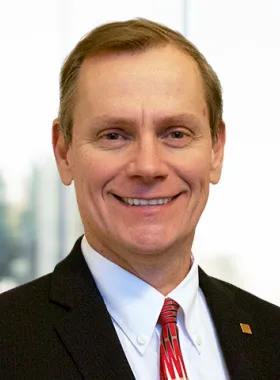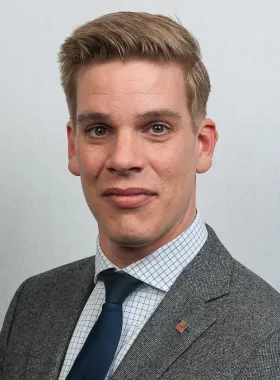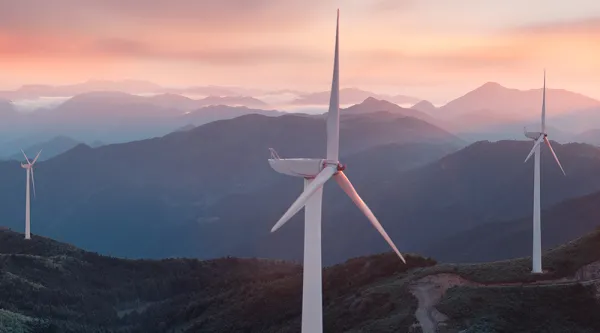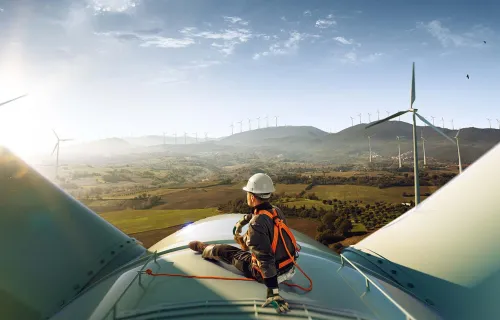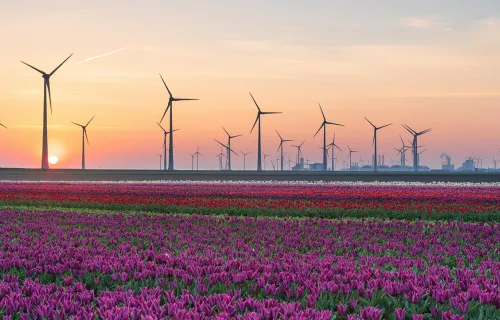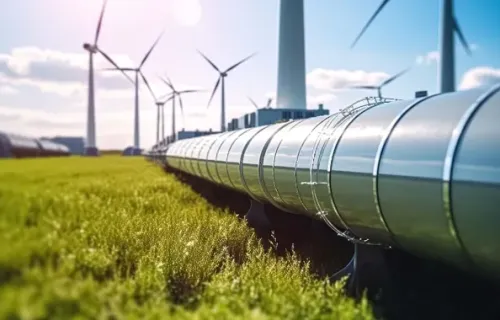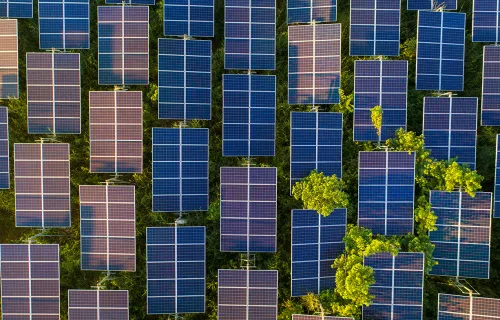Ensuring fairness and equal participation in the new energy market requires robust regulation. However, as the level of regulatory complexity increases, customers and policymakers alike are struggling to keep up. For customers, compliance with one regulation may be in direct violation of another, while policymakers face challenges in keeping pace with implementation and reporting as more rules are created.
Governments face challenges when creating guidelines for such complex, evolving markets; often, high-level policy objectives are not so easily translated to actionable guidance for the intricacies of day-to-day operations. To help this evolve, Tom recommends taking small steps, tackling the low-hanging fruit first.
Striking the right balance between environmental integrity and manageable systems is the key challenge at hand, Kristian says, as organizations move from proving their energy is green on an annual basis to hourly or even every 15 minutes.
Kristian has no doubt that a multi-vector future will be the most efficient and cost-effective way forward but stresses that electricity is moving to the center of the energy system. Calling the 2020s “the electric decade,” he shares that the electricity sector is seeing unprecedented growth, expansion and change.
Many regions face technical regulations when it comes to electricity and grid capacity. Calling it the next big thing to solve due to renewables targets, Kristian highlights two key areas of focus: contractual arrangements for connecting to the grid to mitigate congestion and deploying solutions for better grid utilization.
In most cases, Tom points out, there is also a human capital challenge to get grids to the level required to meet the demand. “Industry people talk about how much renewable energy we want to produce and how we’re producing that, but then we arrive at the question of ‘How much time do we have left and how are we going to do it?’ We need to talk about how we’re going to organize and make it clever.” In his view, AI is critical for alleviating human effort and optimizing assets.
When it comes to AI, he says, we need to strike the right balance between getting robust security standards in place for AI and its use in the electricity sector, while also allowing for deployment of technology that provides a smarter way of doing things.
Another key balancing act Peter identifies is the risk-reward tradeoff that exists between innovative digital opportunities and data security. Millions of new data points and millions of new connections, alongside both known and unknown legacy connections, create not only new business models but also increased cybersecurity risks.
Pointing to the ‘swath’ of ongoing relevant legislation, Kristian agrees that the balance between openness and security is critical. In his view, “there's no way of handling cybersecurity in the age of AI without AI. So, we need to introduce AI defenses to guard ourselves against coordinated botnet attacks with thousands or millions of independent actors that are coordinating by themselves in networks that might not even be under human control.”
When it comes to security strategy, Tom believes there’s a mindset shift required for some organizations. In addition to seeing security as an expense since it doesn’t drive revenue, many organizations struggle to define security as they have traditionally kept IT and OT separate. He suggests that “many of these companies need to make a transition of thinking far more holistically about security as a topic that not only involves an end user, but also the people that they employ themselves.”
Ultimately, despite so many different approaches to the energy transition detailed in part one and two of this conversation with Kristian, it’s clear that the role and use of digital systems is only going to grow and expand—whether via systems to validate the quality of different products, market platforms through which we interact or products with which we ensure security around our energy supply.
Kristian’s final thought looks to the future of digital innovation in the energy transition: “For me personally, the question of AI and how it's going to transform all these aspects is one that I really continue to be fascinated by.”
- 1. Regulation and the role of central markets in a decentralized future
-
Peter Warren:
Hey everyone, welcome back to our conversation with Kristian Ruby and Tom van der Leest. We're going to be picking up here today. And we hit a lot of interesting things in our first chapter. My next section here is, you finished off, Kristian, really talking about fairness with Tom about how to drive that forward. That really points to the future role of central markets and the regulator. In our annual survey of our clients, regulation is always top drawer of concern. How is regulation going to work? How am I going to comply? And some of them even tell me they can comply to this regulation, but that means I actually violate this regulation. If I do this one, I can only do 90% of that one. How does regulation and the central markets all play in this new world to enable this, even trading of hydrogen and other forms of energy that maybe we haven't even thought of?
Kristian Ruby:
That's a very good question. Two things strike me here. First off, what you're saying, what you're referring from your customers, I can comply with this, but then not with that, the level of regulatory complexity is really reaching a difficult stage now. We see so much regulation coming in that even the policy wonks are struggling to keep up, including with all the reporting requirements. So actually, we're quite firm with policy makers these days to say, "Guys, we support your energy transition. We even like it a lot because it provides us opportunity, but let's start implementing all these rules rather than inventing new on top." Because at some point, you'll get paralysis rather than progress if you keep inventing new rules and more complexity.
The second thing that you triggered with me was the idea of what is the role of central markets in this more decentral future? And that is absolutely a critical question. More and more, I think we will see a diversification of products and I think we will see a multitude levels of different market platforms. Very concretely, building on our last conversation about decentralization, the local flexibility markets is something that I expect to become much more prevalent in the coming years. We will simply need, for the efficiency of operations and the reliability of operations, to have local flexibility sources and call upon them more frequently with more frequent market signals in order to stabilize an increasingly complex, increasingly digitized and let's say, an increasingly complex and increasingly digitized and a more complex and centralized grid.
Peter Warren:
Okay. Yeah, I agree with you on that. I think that the concept of command and control still has to be there, to your earlier point about fairness, who owes what to whom. But it also moves through different components of here and certainly the new energy markets. And Tom, your thoughts on that?
Tom van der Leest:
Well, it's interesting, right? Because in many countries, well some countries you have a central market operated that has been mandated by law to act as well. Examples are Finland, but also Poland recently. Different countries such as my own have created even IT organizations that on behalf of the DSOs, so not even a TSO, execute processes that are centrally aligned, aligned. Now that we're looking at multiple commodities in multiple markets, it's very interesting to think about, okay, but how do we organize that, right? Because there used to be a difference between electricity and gas. There were two different physical grids. They are managed separately, they have their own dynamic and we didn't convert electricity into gas, or the other way around. Now that we are doing battery storage, there's a storage market, there is a hydrogen production market where we can actually use electricity to get into a gas, transport that gas through an existing gas network and use that for all kinds of purposes, whether it be mobility, heating or anything else.
Then also, that plays kind of into each other on how that market dynamic works. So it's a trivial kind of view to think about a more decentralized reality where you and I perhaps even trade power from your car battery to my boiler or the other way around. And at the same time, have a requirement also in thinking about cybersecurity in a more digitized way with multiple qualities. So we talked in the first podcast about keeping it fair. But how about keeping it safe, right? It's not only on that asset level, but also it's my information as well, is it yours? It's knowing where you're at home or knowing when you're away or where your car actually is, on what point of the grid and when will it be charging. And is that a good idea to steal your car now or should I leave it for a bit?
So I find it very interesting that we're moving into opposite ways on different levels of the same equation. And I think a lot of the work that government should be doing is setting the brackets for how these markets intertwine and operate, and where do I allow flexibility for commercial parties? Where do I find that regulations in a security kind of way need to comply to? And I think one of the big challenges here is that it requires a deep understanding of how these markets work. So all of a sudden, you're asking governments, please give us the guidelines for something that is so complex that even the parties doing it don't really fully understand where it would be heading. So my thoughts on that would be to take some small steps, some low hanging fruit that would help a lot, but start thinking about that now we're on the forefront of something rather than it picked up and we're chasing behind or thinking, well, maybe this is something for balance responsible, or perhaps DSOs as well. You see it like that Kristian, or differently?
Kristian Ruby:
Well, I can definitely relate to this conundrum of talking to decision makers that are after a certain set of high-level policy objectives. And then once they get into the, let's say, nitty-gritty, actually that's where their guidance becomes kind of vague. We saw it last year also with these policy interventions in the wholesale electricity market, and some very sort of disruptive ideas of just changing the whole thing to CFDs overnight.
And we said, well, have you thought this over? Do you know what it does to forward markets, for instance, if you transform all dispatch into CFDs? And they were like, "Oh. Oh my god, really?" So they started thinking of the implications of these policy decisions that they were about to take, and it underlines that level of complexity we're operating in. Further to the question of products and that whole, let's say interface between electricity and gas, that's another place where we'll see an evolution in the way things are done. We talked about fair, we talked about reliable, but there's also the clean dimension. Green hydrogen, we want to make sure that it is actually green. And that's where all these questions about geographical proximity, timely match of the actual clean electricity production with the electrolyzers come in and setting up digital platform, defining concrete products around that, that is a next level challenge or a next up challenge I would say for digital companies and energy providers together, to find out how is that going to look.
We've had some quite detailed discussions about this where we try to find out what is the right balance between environmental integrity on the one hand and actual manageable systems on the other hand. We come from a world where you just need to prove on a yearly basis that your energy is green. And now we're talking about moving to hourly or quarterly intervals. And essentially, we don't have the infrastructure in all parts of Europe to make that level of precise calculations and measurements. So how do we create a manageable transition from yearly accounting to monthly, weekly, hourly and ultimately perhaps a quarter, 15 minute accounting? That's some of the things we're grappling with for the moment in this space.
- 2. The unprecedented expansion of electricity and its impact on the grid
-
Peter Warren:
It's very interesting what you say. Your name is Eurelectric, but you maybe have to change yourself to Euroenergy because it really gets into all of these other forms of energy. And you touched on it when we were talking earlier about the fact that one size won't fit all. Everybody's going to do different things based on the geography. It's going to have to be a lot of flexibility. We know that at COP 28, they're going to be announcing new hydrogen rules, so they're moving away from the colors because how pink is pink and how green is green to more of a measurable thing about carbon intensity. I hope they remember the social part too. So it's not all made with kittens and slave labor or something. But it's a bit better way of doing it, but another way of tracking this through.
So I think the other thing, when you mentioned it, clearly hydrogen's part of it. What about e-fuels? How do you see biodiesel and ethanols coming on? The marine industry is interested in this. In Canada, British Columbia is going to make e-diesel, biodiesel, for their ferries and boats and the harbors. And we see this happening in other spots around the world. Tampa is doing the same thing, Tampa in Florida. Where do you see that in the mix for all of these things for yourself?
Kristian Ruby:
Very interesting question. And to begin with, I'd say, I think we're going to stick with our name, Eurelectric, because our vision is really that rather than us becoming, let's say something else, the truth is that electricity is moving to the center of the entire energy system, which is absolutely fascinating, which is also why we're talking about the 2020s as the electric decade. This sector is seeing a growth, an expansion, and a level of change that has not happened since its inception. So where's the role for the e-fuels and for all those exciting new products?
In my mind, there's no doubt that we're going to have a multi-vector future going to be in many cases by far the most efficient and smart and cheap way to do things. So anywhere that's possible, that would be the option we would be advocating for. That means get rid of combustion engine cars for passengers, get rid of combustion engine passenger cars, get rid of gas boilers in individual homes, replace it with the electric options that are way more efficient. Then for the more hard to electrify segments such as maritime, you mentioned that aviation. We're going to look at e-fuels as one option. I don't exclude others, but it's difficult to see how they will be truly carbon-neutral in many cases at least. So that's another, let's say, area where we need to develop the products, the standards, as well as the management systems, the digital management systems for that.
In Denmark, my country, we have a quite exciting development. We have Maersk, the big shipping company, that have put up a pledge to become carbon-neutral by 2040, which is absolutely inspiring and ambitious issues. And in order to serve their demand for e-fuels, the government has now tendered massive capacities of hydrogen to begin with. And ultimately, the target will of course be to produce fuels. But we need a market pool for that and to some extent, also a government pool to get things started because this is really new territory and we're going to see a rising level of demand from this because at the end of the day, many of these sectors that are hard to electrify, really account for a big chunk of the total final energy consumption in the world.
Tom van der Leest:
Yeah, very much agree. I think that the difficult thing about electricity, at least in many of the countries, it's just part of the energy mix. And if you look at grid capacity, if you would electrify everything, even if it would be technically possible, your grid would never sustain it. And there's a big kind of human capital challenge there to get grids up to the level, whether it be high, medium or low voltage to actually deal with this increasing demand. So in the Netherlands, my own country, there's no more capacity to give. 75% of our country is on red. So if we look at expansion for businesses, new connection points, fast charging stage and stuff like that, the grid's full. And that's a very different dynamic than it is to Denmark, where you have that high voltage getting it from the sea to the country kind of dynamic. Whereas with us, it's not that much an issue to get it through high voltage, but much more through lower voltage. And that we find very interesting.
- 3. Balancing the grid and using AI to support the energy transition
-
Tom van der Leest:
I visit many kind of different events talking about where industry people talk about these topics. What also amazed me is that we tend to talk about how much renewable energy we want to produce and how we're producing that. So I see big energy production companies saying, "Well, my windmill is so many megawatts, how big is yours?" Which the other one replies, "But my battery is this big." And then you're getting to the question now who's going to do it? What time do we have left and how are we going to do it? And that feels to me that sometimes we're not already talking about, but how are we're going to organize it and make it clever? So want to talk that we at CGI are looking into is trying to use AI kind of models within it to solve the problem, not only to utilize assets on a more better way, rather it be on the predictive maintenance side or just when you switch from point A to B, to C.
But also to solve a bit of that human capital question by de-intensifying the human effort needed to perform some of those tasks. Well, I'm not very objective because I work at an IT company, so I'm always very interested in having that IT conversation. From your point, Kristian, do you see that conversation happening or do you think it's not mature enough or to be focusing on different things first? What's your view on that?
Kristian Ruby:
I think the conversation is there. What we really need to see is the action follow it, and also the proper frameworks to allow people to do the right thing. And that's probably where things are lacking today. It's a very interesting example you give with the Netherlands. We made a report recently where we went into the whole issue of grid capacity, which is in our view, the next big thing to solve because we got the targets for renewables, we got all the plants and the ambitions. But connecting all this stuff, how do we do that? So the grid and the flex challenges are really the ones that we're putting a focus on right now. What we showed in this report was first off, you need to do everything you can with the existing grid and you need to go new ways with the existing grid in order for us to get there.
And what do I mean by that? First off, we need to think differently about, for instance, contractual arrangements. So you might, next time that you get a charge point operator requesting to add, to connect to the grid, you might have to talk to him and say, "Well, you can connect, but we can't guarantee supply for certain hours of the day." So it's in your interest to come online, but actually you need to tell your customers you can't charge at certain hours a day because that's going to be a congested grid for you there. So that's one sort of aspect to this.
The other aspect we're saying in this report is let's deploy solutions that allow for better grid utilization. And that can be, for instance, dynamic line rating, slap sensor sensors on your grid and check out what's the weather like and how much juice can you actually drive through this grid at a certain point in time. That's going to be very different from day to day. But back in the day when the engineers came up with the security standards 100 years ago, well, they didn't have sensors and they didn't have weather forecast that would allow them to basically optimize on an hourly basis or something. So let's use all that stuff.
And by the way, when we talk about the optimization of DRMs as we had in our last conversation, the big grid operators that are part of our membership are saying the only way to run the future grid with 50 million heat pumps, 50 million electric cars, millions and millions of generation assets locally produced or locally situated, the only way to run that is with full digitization, full automation. And that's where that question comes in, how do we then strike the right balance?
When we look at the AI rules that are coming in place in Europe for the moment, they're too strict. They're basically restricting the use of AI for critical infrastructure, components or assets. And that means, for instance, that you can become restricted in your use of a drone for O&M on a grid line, which would be detrimental because everybody's using drones to do O&M and in the same vein, for digital management systems that all of a sudden you can't use AI. And that's basically making the transition harder rather than making it easier. So we need to strike the right balance between getting robust security, let's say, standards in place for AI and the use also in the electricity sector, and at the same time, allow for the obvious deployment of the technology that's going to happen because it's just a smarter way of doing things.
Peter Warren:
Yeah, you've hit on a ton of points there. And it's very, very interesting to see how that is going to come together. AI, we've written our own ethical use of AI policies and things with our stuff. But you're right, if you can't use space data and then back it up with either a drone or something else and then combine it. And maybe with cameras because you might be concerned about some policy, it's going to be a factor. The innovation of AI is long been used by the energy market. It's not like it's brand new, it's top of mind today because that sea change you mentioned in a previous call we had has happened.
- 4. Cybersecurity strategies need to balance openness and security
-
And you talked about the last question here before maybe I go to wrap up with a few minutes we have left here is, and you hit on it a second ago, is cybersecurity. Millions of new data points, millions of new connections, a lot of legacy connections out there, some of which are known, some of which are unknown. Your thoughts on that, cybersecurity, where does that fit in?
Kristian Ruby:
It's a good question and it's one where I don't have the answer. If I had, I would put up a consultancy and make a lot of money. To be serious, we've been pushing for that opening up of the data layer for digital twins and a digital doubling of the system for years, to make sure that we can unlock the new business models that we can make things easier faster for everybody. Of course, if we succeed with that, we have another dimension to this, which is that it also becomes easier for people with bad intent to, let's say, activate these systems. And I think this particular dimension has really sort of gained more attention in the last year. We've seen, of course, over years that especially Putin's Russia was very active in using cyber strategies against their neighbors, but also frankly, against European utilities.
And now the question of striking the right balance between openness and security is really big time back on the table. There's a swath of ongoing legislation there that we're following and trying to ensure strikes the right balance. But going forward, the whole issue of cybersecurity I think is going to be a major part of this conversation. And at the end of the day, my view is that there's no way of handling cybersecurity in the age of AI without AI. So we need to introduce AI defenses to sort of guard ourselves against coordinated botnet attacks with thousands or millions of independent actors that are coordinating by themselves in networks that might not even be under human control. So we need to start looking into innovative solutions to ramp up our security also in this space.
Peter Warren:
Tom, your thoughts on this? You've led some of this with some of our larger clients, so maybe a bit of a practical view of some of this as well.
Tom van der Leest:
I fully agree. I think we don't really have the answer yet. In general, companies see security in many occasions as an expense because it doesn't drive more revenue. It's something that diminishes margins. I think many companies also struggle with shaping the way they define security because we talk about different types of it. We talk about IT security, but we also talk about OT security or physical security or safety. These topics are kind of interrelated.
Within energy and utilities, you often see that now that we, and that's a point, Kristian, you touched upon earlier, we want to measure more. We want to know what's happening at each point in the grid at each certain point of time. That requires us to digitalize something that used to be just a pipeline in the ground that all of a sudden, has an IT/OT integration into it where we don't really know what's the status of the device itself, yet alone, what kind of information is derived out of a sensor. So I think for many companies, it's two different worlds that are traditionally IT and OT security are separate kind of worlds that now need to come together. So I think many of these companies need to make a transition of thinking far more holistically about security as a topic that not only involves an end user, but also the people that they employ themselves.
Peter Warren:
Yeah, definitely. I think that that's a practical thing. And one of our beliefs is security is not something you bake on, it's everything you do. It's got to be top of mind. Privacy has to be top of mind. You talked about the open data aspect, Kristian. Well, I'm going to wrap up here. I'm going to give Tom a chance to give his final thoughts here, and then Kristian, you can have the final word today as our guest. So thank you very much. So over to you, Tom, and then you can pass it over to Kristian when you're done.
- 5. Concluding thoughts and key takeaways
-
Tom van der Leest:
Thanks, Peter. I very much like this conversation. It's interesting to hear some views from different parts of the world, even if that part in Denmark is relatively close. It still amazes me how much we can differ within Europe on a similar commodity through different kind of countries. Strongly hope we will get a regulatory framework that allows companies to move forward, also to finance the insecurity. I think often, especially with new energy carriers, we don't really know how the future will look. But in order to develop them, we need large amount of monies to pull them forward. And that also involves the end consumers. Who's going to be actually using this, and being doubling down on those commodities. So looking forward to all that happening. And as a CGI member, I very much hope we have this IT conversation at the start of that process rather than after the fact, to refer back to you, Peter.
Kristian Ruby:
Yeah. So I really appreciated this conversation, and it's triggered a few thoughts with me when it comes to the use of digital systems to manage the energy transition, whether it's systems to validate the quality of different products, whether it's the market platforms that we interact through or whether it's the products with which we ensure security around our energy supply. We're following this on multiple levels in your electric, but I think it's a topic that's just going to grow and grow. And for me personally, the question of AI and how it's going to transform all these aspects is one that I really continue to be fascinated by.
Peter Warren:
Great final word and final thought. Thank you very much to both of you and with that, we'll close till next time. Bye, everyone.


